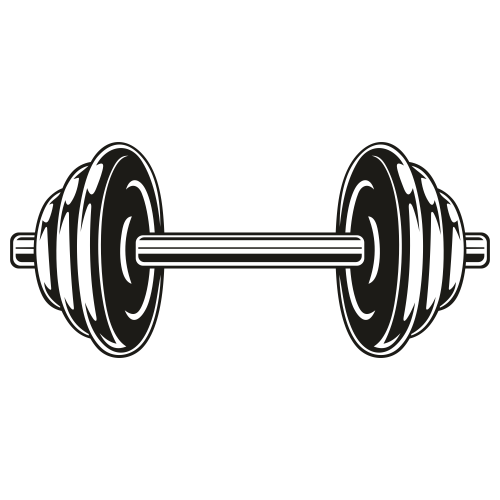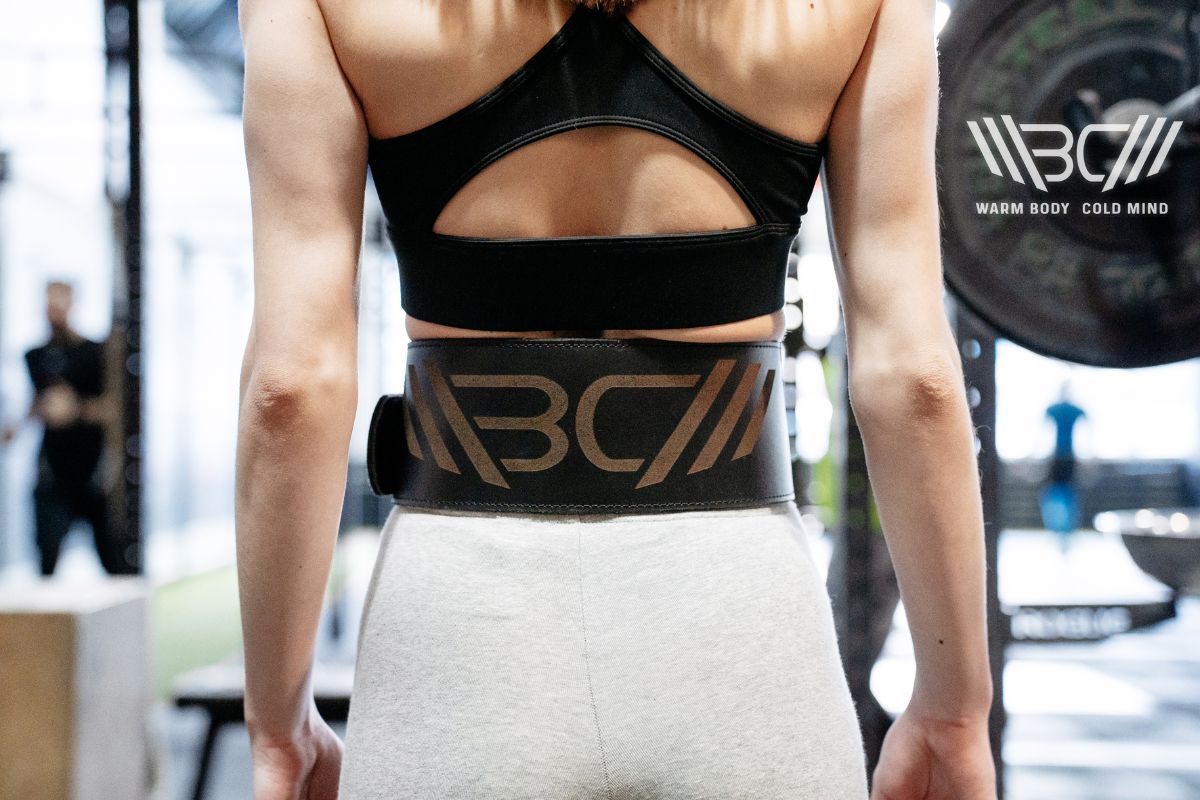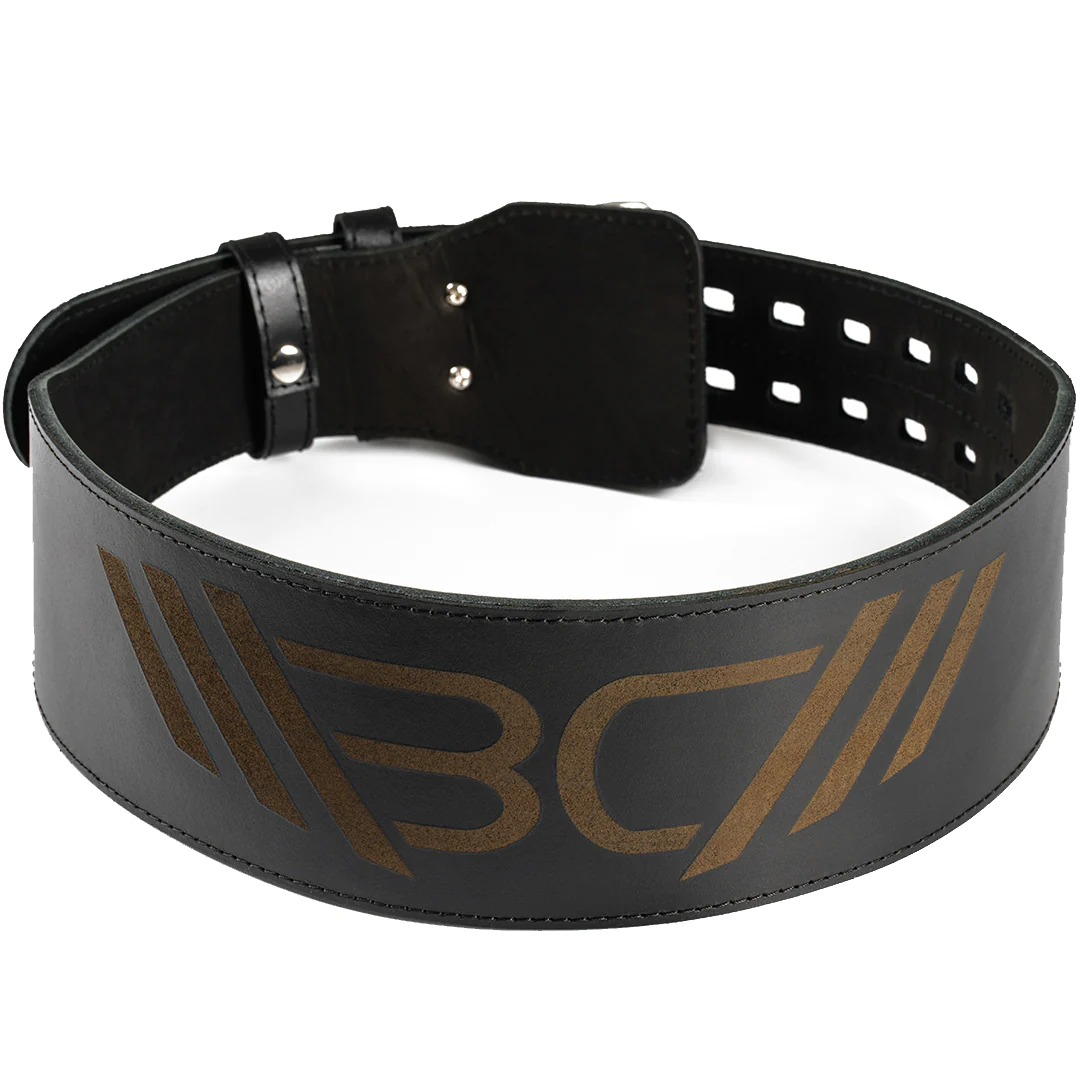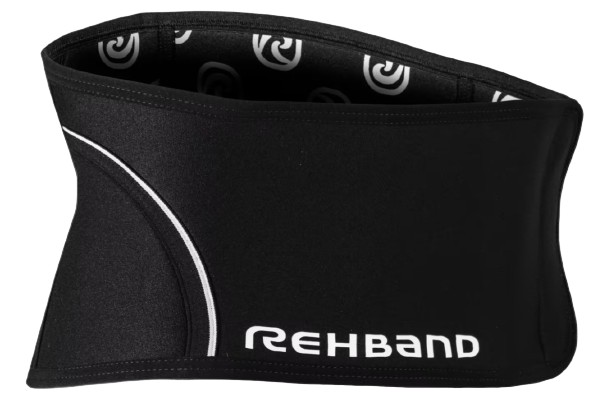Weight Lifting Belt vs Back Brace: Which One Is Right For You?
Weight lifting belt vs back brace is a topic that’s talked about all the time in the gym. Whether you’re considering a back brace for lifting weights or some general weight lifting back support, we’ll get to the bottom of this and more in today’s article.
So what piece of equipment comes out on top when we look at a weight lifting belt vs a back brace?
There are a few differences between a weight lifting belt vs back brace, the biggest being that the latter is typically used for back injuries. A weight lifting belt is commonly used to provide additional abdominal pressure and support the back and core through heavy lifts.
Weight Lifting Belt vs Back Brace: An Overview
Take a walk around a busy gym and you’ll likely come across at least one person training with a workout belt for back. This is a common piece of lifting equipment, but often it gets confused with a back brace which provides completely different support to the back, particularly post-injury.
When lifters train using a weight lifting belt, they are aiming to increase their intra-abdominal pressure (IAP), essentially stiffening the core and the lower back during movements such as the squat or deadlift.

When we talk about IAP, we’re essentially talking about the trunk of the body but mainly the abdomen, as along with the back, our core is a vital part of overall trunk stability, which can be increased through the use of a belt.
A back brace tends to find its place with those who have a back injury or weakness and need to reduce pressure going through the lower back. By relieving some of the load from the lower back, a brace can aid recovery for those with injuries, though it’s best to only use one if you’ve been recommended by a trainer or health professional as dependence can lead to a worsening of symptoms.

Enhance your strength training with Warm Body Cold Mind leather weightlifting belt providing exceptional support and durability.
Main Differences of Weight Lifting Belt vs Back Brace
We’ve already touched on a couple of differences between a back brace vs weight lifting belt, but are there any other points that separate these two pieces of equipment? Yes! Many things separate belts and braces, from how and where they should be used, to the support they give the body.
| Weight Lifting Belt | Back Brace |
| Can be used in the gym to provide increased support to core muscles. Proven useful through a variety of movements such as the squat, deadlift, barbell rows, and bench press. | Primarily used when experiencing back pain or to aid in injury recovery. Can help with a weak back or spinal injury, though best used when recommended by a professional. |
| The focus of a belt is to provide extra pressure in the core. | A brace works to isolate the back, reducing movement, and lessening muscle tension or stiffness. |
| Weight lifting belts should only be utilized through heavy lifts where additional support is needed. | Braces can be worn for extended periods of time when recommended. |
1. Weight Lifting Belts For Gym Use
Some gym-goers may use a weight belt for lower back support, though this actually isn’t the intended use for this type of belt. Instead, weight lifting belts can be used in the gym to provide stability to the trunk of the body with increased pressure in the core.

This doesn’t mean you can rely on the belt to do the hard work for you! Bracing yourself, and engaging your core through movements is key in benefitting from the support a belt can provide.
2. Back Braces For Injury
It’s wise not to use a back brace for weight lifting as they don’t provide the same support a weightlifting belt does, especially if you already have an ongoing back problem. Braces are used primarily for injuries or spinal conditions to minimize curvature, reduce back pressure, and improve overall spinal stability.

Weight Lifting Belt
A weight lifting belt is primarily utilized when performing heavy-load compound lifts where additional support and stability are required through the core muscles of the body. Belts are often seen as a weight lifting back brace, but it’s best to think of them as more of an extra piece of kit for your heaviest or test days.

Pro Tip:
Never rely on equipment more than yourself! If you’ve been training consistently, progressing with every program completion but need additional support through your heavy days, give a belt a go! This doesn’t mean putting all of your training on the back burner but instead means increasing the support to your core to push through heavy lifts.
1. When To Use
Avoid using a weight lifting belt too often, as with most gym equipment, there’s always a risk of becoming dependent and not performing well without aid. Generally, weight lifting belts are great to introduce to heavy compound days.

These days may include exercises such as deadlifts, squats, presses, rows, and Olympic lifts. It’s important to train without a belt to ensure you are still confident and able to complete movements unaided.

Discover the strength of the Warm Body Cold Mind nylon lifting belt. Lightweight and durable, it provides optimal support for your workouts.
2. Pros/Cons
All equipment and extras in the gym have benefits and disadvantages, with weight lifting belts being no exception. Whether you’re a gym newbie or a seasoned pro, it’s wise to be cautious when introducing new kit to your sessions.
| Pros | Cons |
| Can provide excellent support and increased pressure to the core to succeed with heavy lifts | Can lead to dependency if overused and relied upon too often |
| Affordable piece of kit which will likely last a significant length of time | Wearing a belt regularly as a beginner gym-goer can lead to muscle weakness over time |
| Easy to use once familiar with positioning and personal fit | Bulky piece of kit to carry around in a gym bag |
3. How To Use
Once you’ve practiced wearing a belt a few times, you’ll understand what’s comfortable for you and will be able to take this knowledge into your sessions. To wear a weight lifting belt, first, wrap the belt snugly above the hip bone, in a comfortable position for your body.
The belt should be tight enough so that when you exhale, you can feel the pressure of the belt pushing against your stomach, but it doesn’t feel like your body is about to pop! Brace as normal, engaging your core and back, and breathing laterally to complete the desired movement successfully.
4. Do Weight Lifting Belts Help Lower Back Pain?
The primary role of weight lifting belts is to aid in increasing the pressure going through the abdomen, which in turn can support lifters through a variety of movements. They aren’t, however, to be used to provide support for those experiencing lower back pain.
Correctly using a weight-lifting belt can increase the intramuscular pressure during lifting motions, though this doesn’t mean belts are the answer to those already experiencing back pain or problems.
Belts We Recommend
Our WBCM leather weight lifting belt is available in a range of sizes from small to XXXL. It’s the perfect fit for lifters wanting improved back and core support and boasts a durable buckle system reinforced by 4 bolts.
With four different color options and 5 sizes to choose from, our WBCM nylon weight lifting belt offers comfortable support and stabilization. The innovative self-locking system means you can put more thought and focus into your lift, and less on the belt coming out of place.
Subscribe!
The latest reviews of must-have home gym training equipment, apparel, and supplements that will enhance your performance and bring you new results.
Back Brace
Back braces are designed to give additional support in the form of flexible, semi-rigid, and rigid braces for people struggling with back pain, weakness, instability, or injury.

1. When To Use
Back braces are primarily used when someone is experiencing an issue with their back and require further support. Back braces can be used in the gym, but they don’t provide the same support to the core that a specific weight lifting belt does. If you’re experiencing back issues and are considering wearing a brace to the gym, it may be wise to investigate the problems further before lifting any weights to avoid injury.
2. Pros/Cons
Just the same as weight lifting belts, back braces have a time and place when they are best utilized. It’s not always necessary to wear a brace, but exploring the pros, cons, do’s, and don’ts of a brace can help lead you in the right direction for what your body needs.
| Pros | Cons |
| Can provide support and stability to those suffering from a weak or injured back | May lead to dependency and weakened muscles if overused and relied upon regularly |
| Can be worn and used discreetly | Reduces the range of motion, making bending, lifting, and moving, in general, more difficult |
3. How To Use
There are many different types of back braces available, and each one will have specific instructions on how to apply the brace to the back, so be sure to read these before attempting to wear your brace. Generally, braces are worn by wrapping the strap around the lower back so it fits snugly but is still comfortable. Then, wrap the rest of the strap around the front of your body, and pull the lever to the appropriate tightness.
Back Brace We Recommend
Available in a range of sizes to 2XL, this Rehband Back Support is a neoprene slip aiding lifters in rehabilitation and overall reduction of lower back pain and injuries, providing relief and support.
FAQ
Should You Wear a Back Brace When Lifting?
Back braces can be worn when lifting, but this heavily depends on the individual and any current back injuries or problems they are facing. Back braces when lifting can provide support, however, weightlifting belts may be a better option for those looking to increase pressure through the core to lift heavier loads.
Are Lifting Belts Good For Back?
A weight lifting belt can be a great inclusion in heavy sessions to help reduce the chance of injury and provide additional support. A belt can increase the explosive power behind exercises such as the squat, which can result in hitting bigger numbers with heavier lifts.
Is a Weight Lifting Belt Better Than No Belt?
The use of weight lifting belts in the gym can help increase abdominal pressure, minimize any unwanted movement in the back, and aid lifters through heavy movements while supporting their back and core.
Beginner gym-goers are best to get familiar and confident with unequipped lifts before using equipment such as a weight lifting back brace. This helps those new to fitness stick to lifts within a sensible range and helps prevent common injuries in the gym.
Conclusion
After exploring everything there is to know about weight lifting belts and back braces, it’s clear there’s a time and place for utilizing both pieces of equipment. Whether you’re still on the fence or are ready to take the next step and invest in some additional support, be sure to choose the best lifting belt for lower back pain and stability.
Do you use a belt or brace in your sessions? Let us know about your experience in the comments!
References:
- J E Lander, R L Simonton, J K Giacobbe, “The Effectiveness of Weight-Belts During the Squat Exercise”, National Center For Biotechnology Information, https://pubmed.ncbi.nlm.nih.gov/2304406/, (Accessed January 13 2024).
- Guilherme Erdmann da Silveira, Rodrigo Mantelatto Andrade, Gean Gustavo Guilhermino, Ariane Verttú Schmidt, Lucas Melo Neves, Ana Pala Ribeiro, “The Effects of Short and Long Term Spinal Brace Use With and Without Exercise on Spine, Balance, and Gait in Adolescents with Idiopathic Scoliosis”, National Center For Biotechnology Information, https://www.ncbi.nlm.nih.gov/pmc/articles/PMC9413676/, (Accessed January 13 2024).
- K Miyamoto, N Iinuma, M Maeda, E Wada, K Shimizu, “Effects of Abdominal Belts on Intra Abdominal Pressure, IntraMuscular Pressure in the Erector Spinae Muscles, and Myoelectrical Activities of Trunk Muscles”, National Center For Biotechnology Information, https://pubmed.ncbi.nlm.nih.gov/10619094/, (Accessed January 13 2024).
- Zinc AJ, Whiting WC, Vincent WJ, McLaine AJ, “The Effects of a Weight Lifting Belt on Trunk and Leg Muscle Activity and Joint Kinematics During the Squat Exercise”, Journal of Strength and Conditioning Research, https://europepmc.org/article/med/11710410, (Accessed January 13 2024).
- Diego A. Bonilla, Luis A. Cardozo, Jorge M. Vélez-Gutiérrez, Adrián Arévalo-Rodríguez, Salvador Vargas-Molina, Jeffrey R. Stout, Richard B. Kreider, Jorge L. Petro “Exercise Selection and Common Injuries in Fitness Centers: A Systematic Integrative Review and Practical Recommendations”, National Center For Biotechnology Information, https://www.ncbi.nlm.nih.gov/pmc/articles/PMC9565175/, (Accessed January 13 2024).
Author: Sergii Putsov
PhD in Sport Science, Olympic weightlifting, Strength & Conditioning coach and fitness expert
Sergii Putsov is a professional weightlifter with over 20 years of experience and multiple national medals. He was a member of the National weightlifting team, competing in the 94 kg weight class. Sergii holds a master’s degree in Olympic & Professional Sport Training and a Ph.D. in Sport Science. After his athletic career, Sergii transitioned into coaching and is now responsible for designing training programs, writing blog articles, providing live commentary for international weightlifting competitions, and hosting sport and fitness seminars worldwide.













